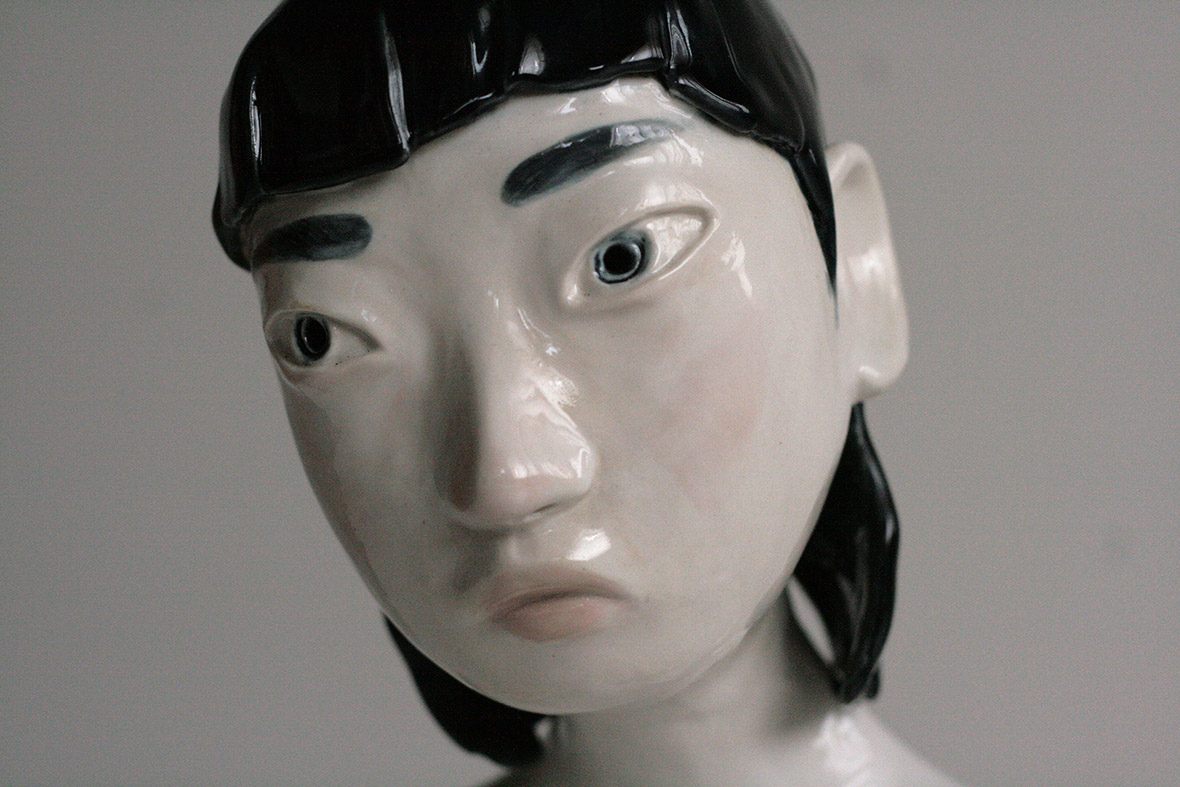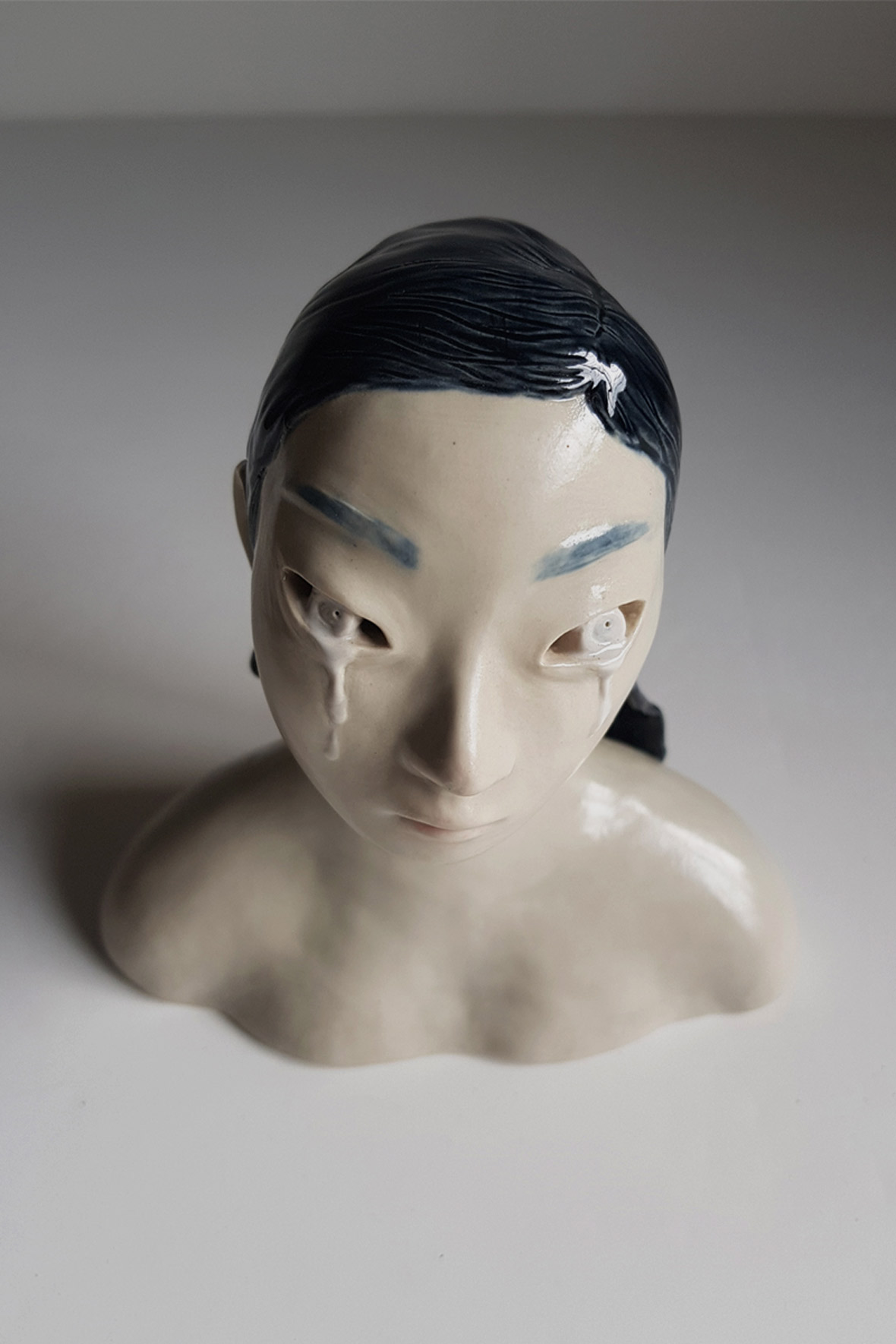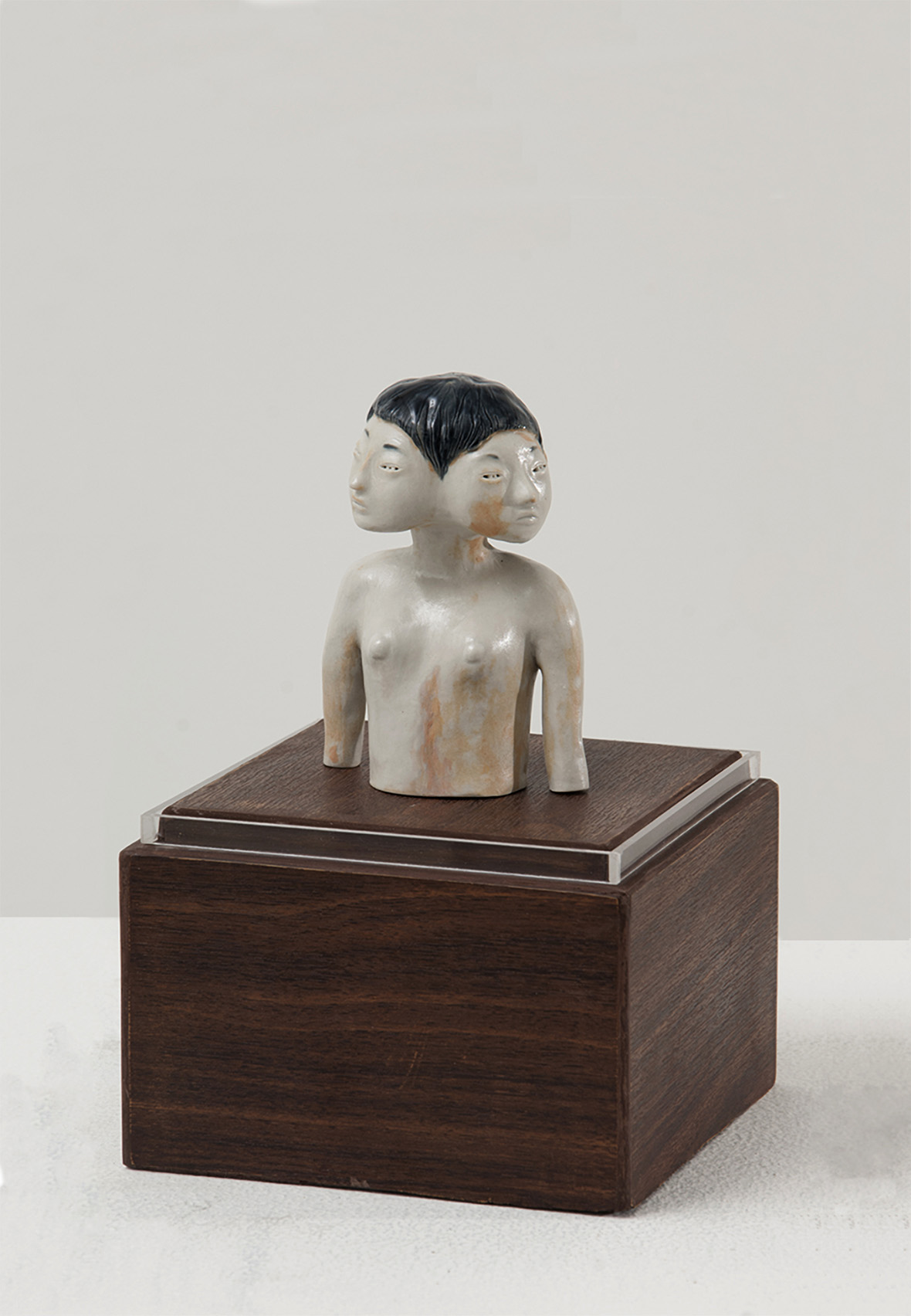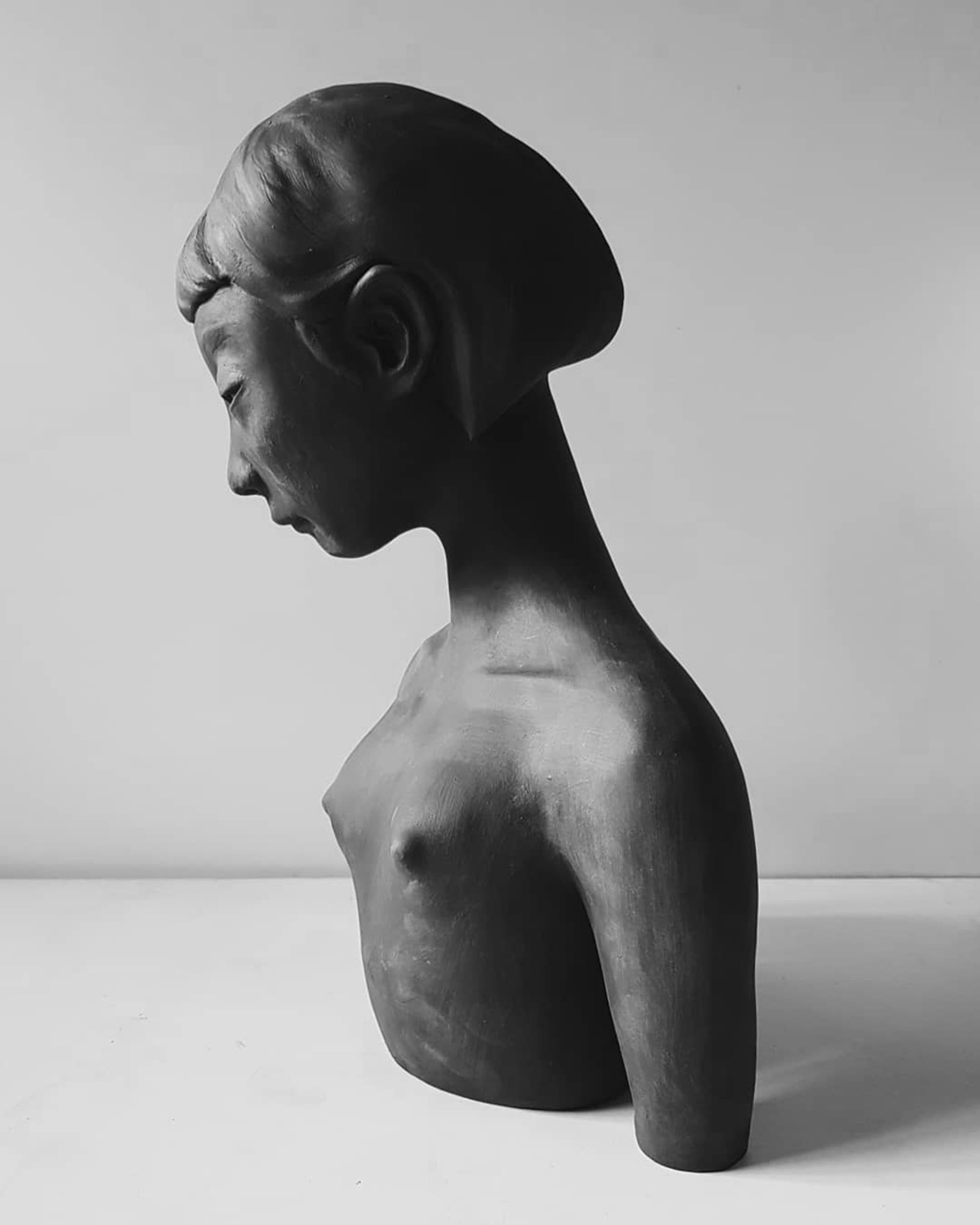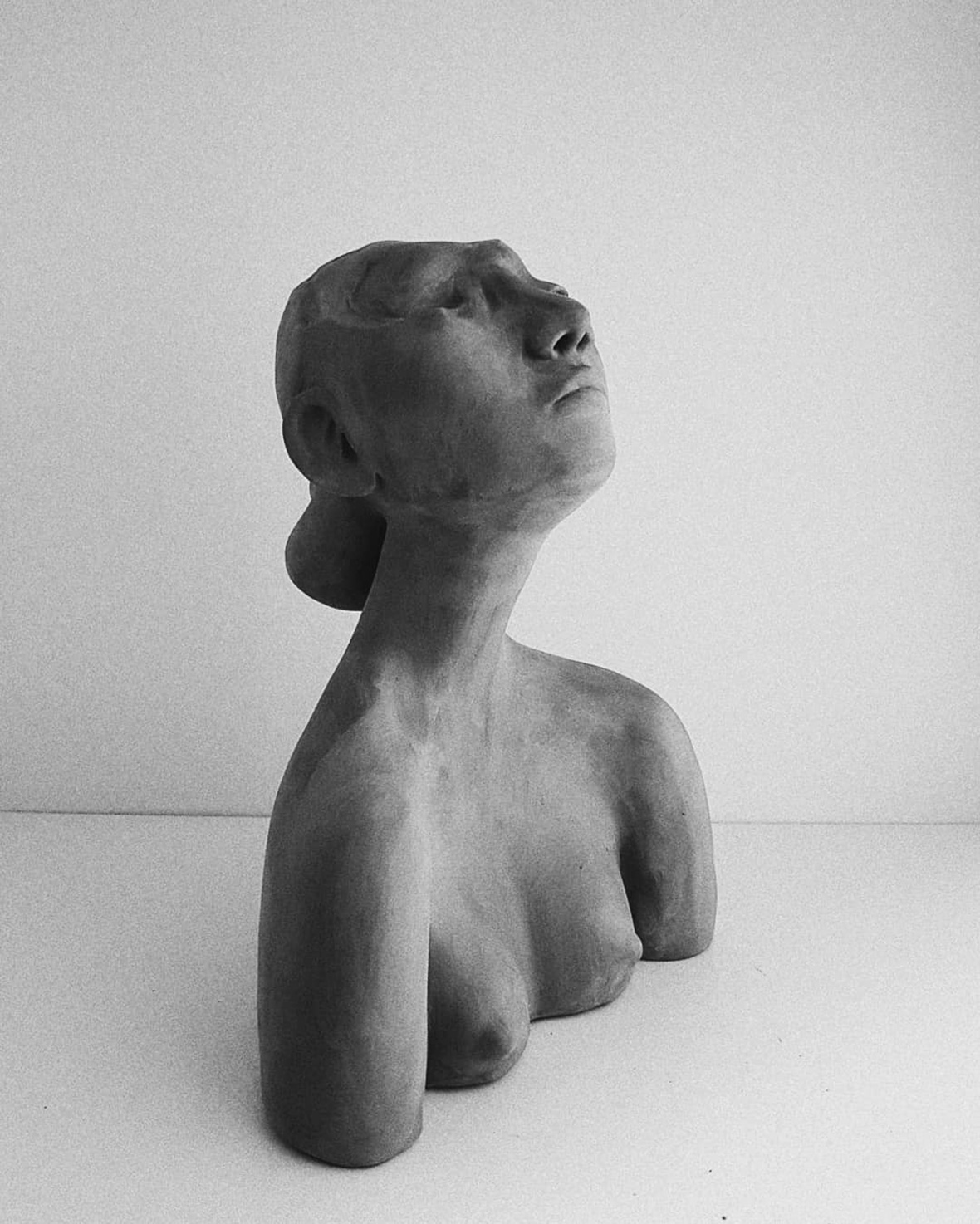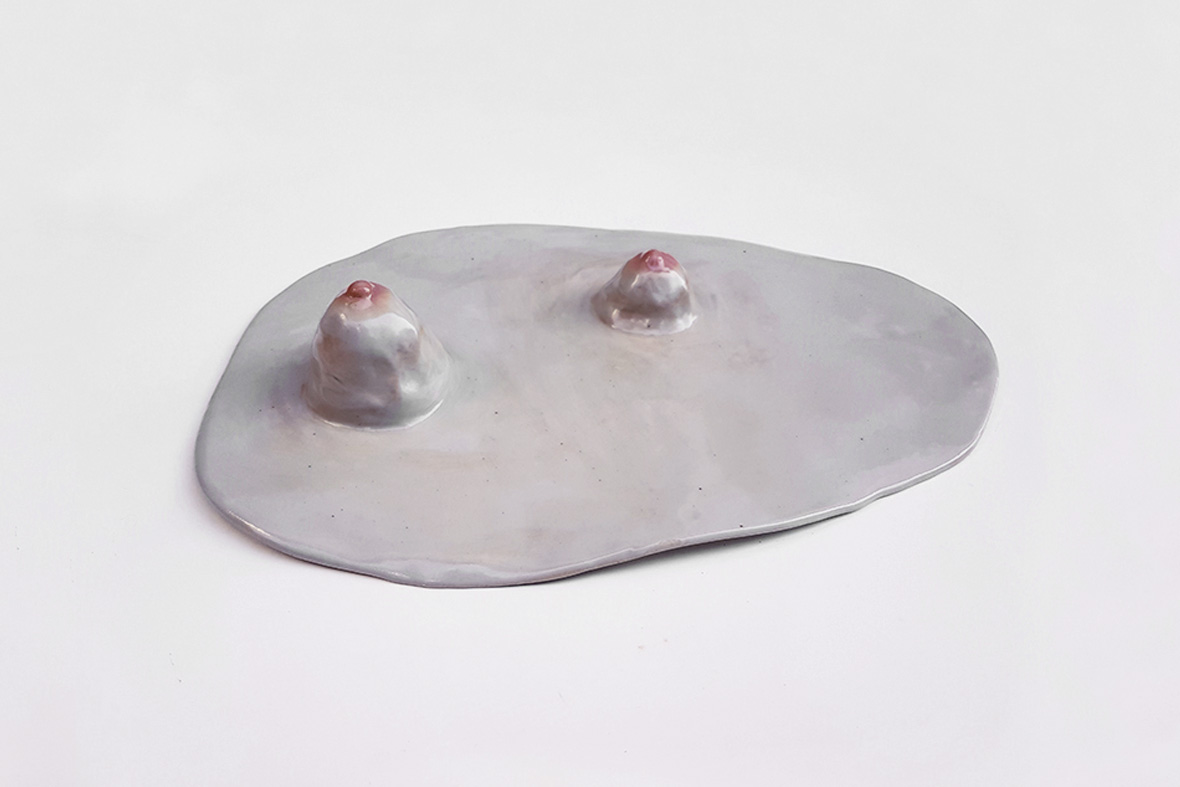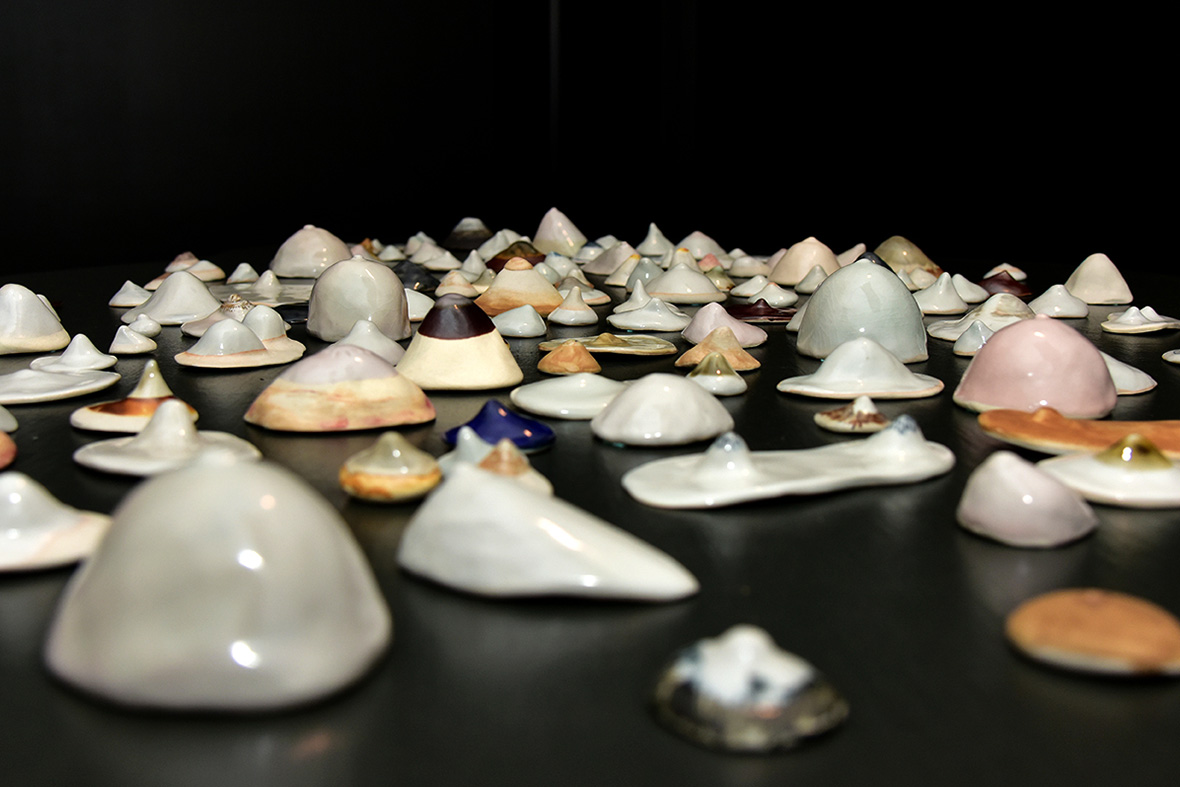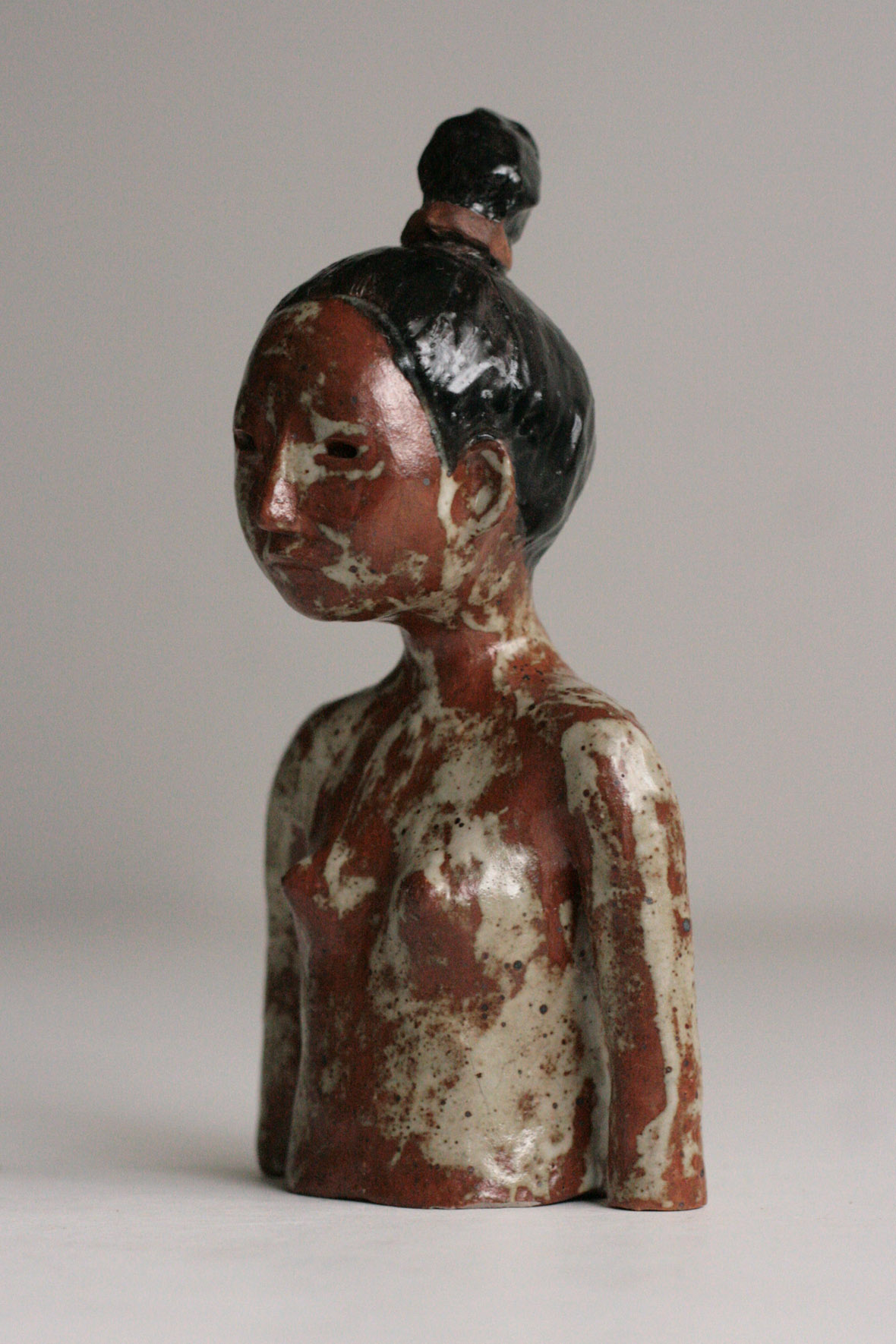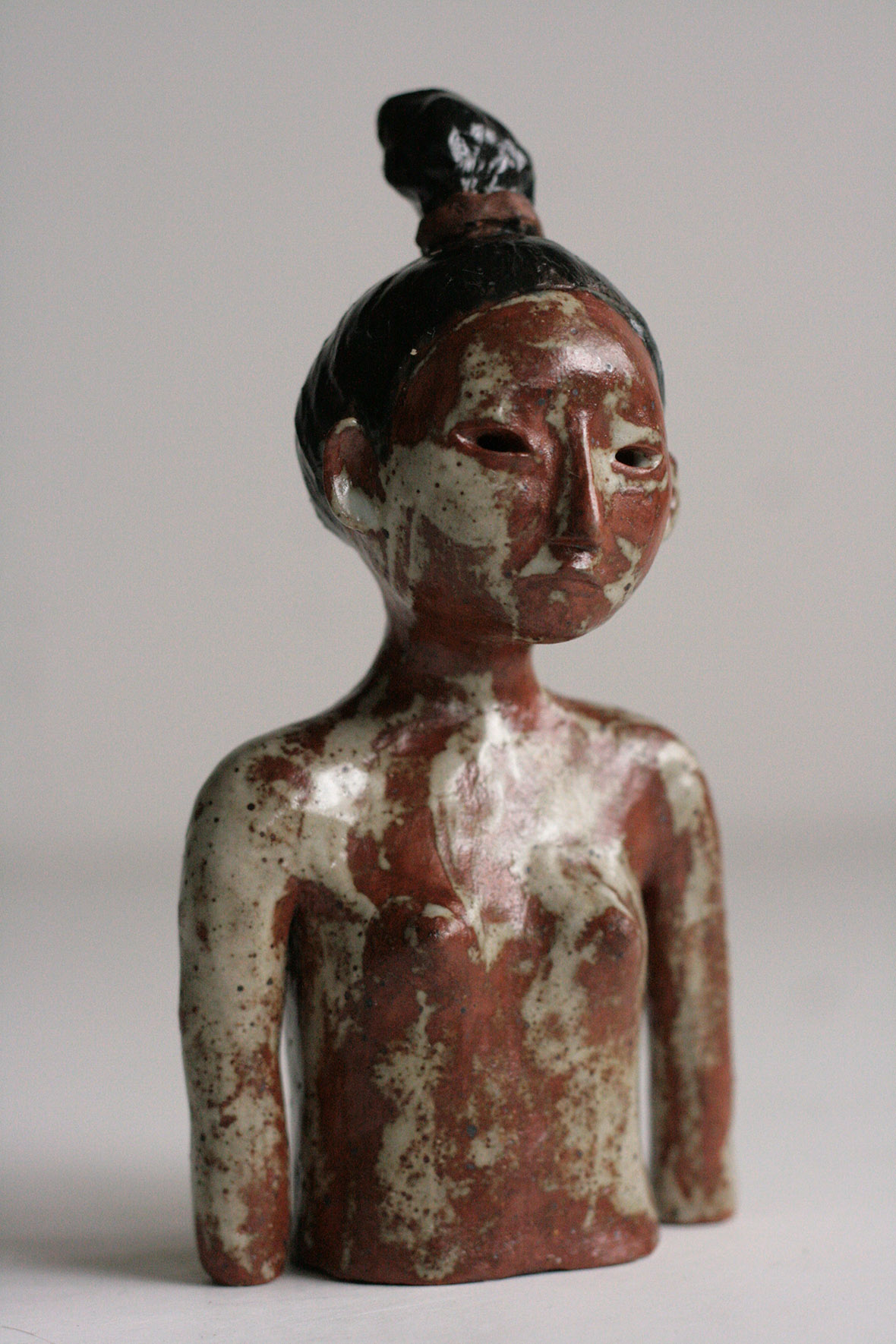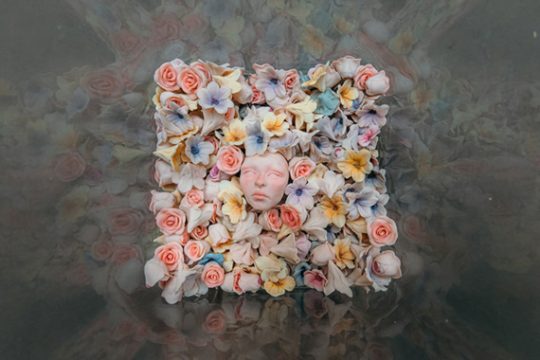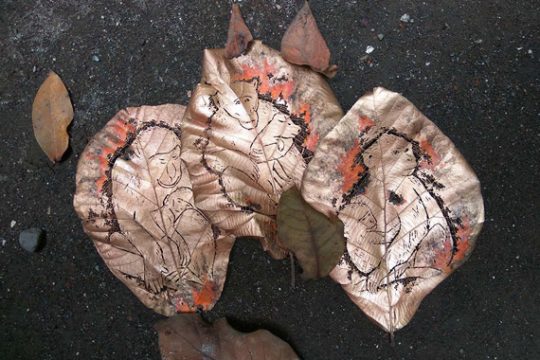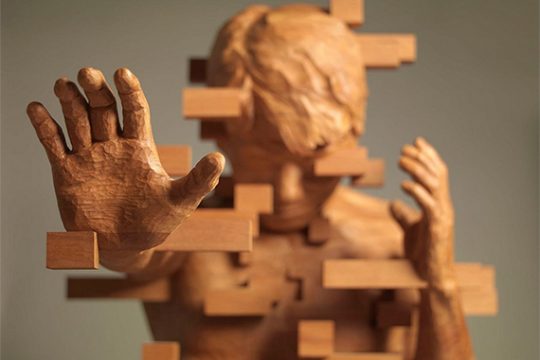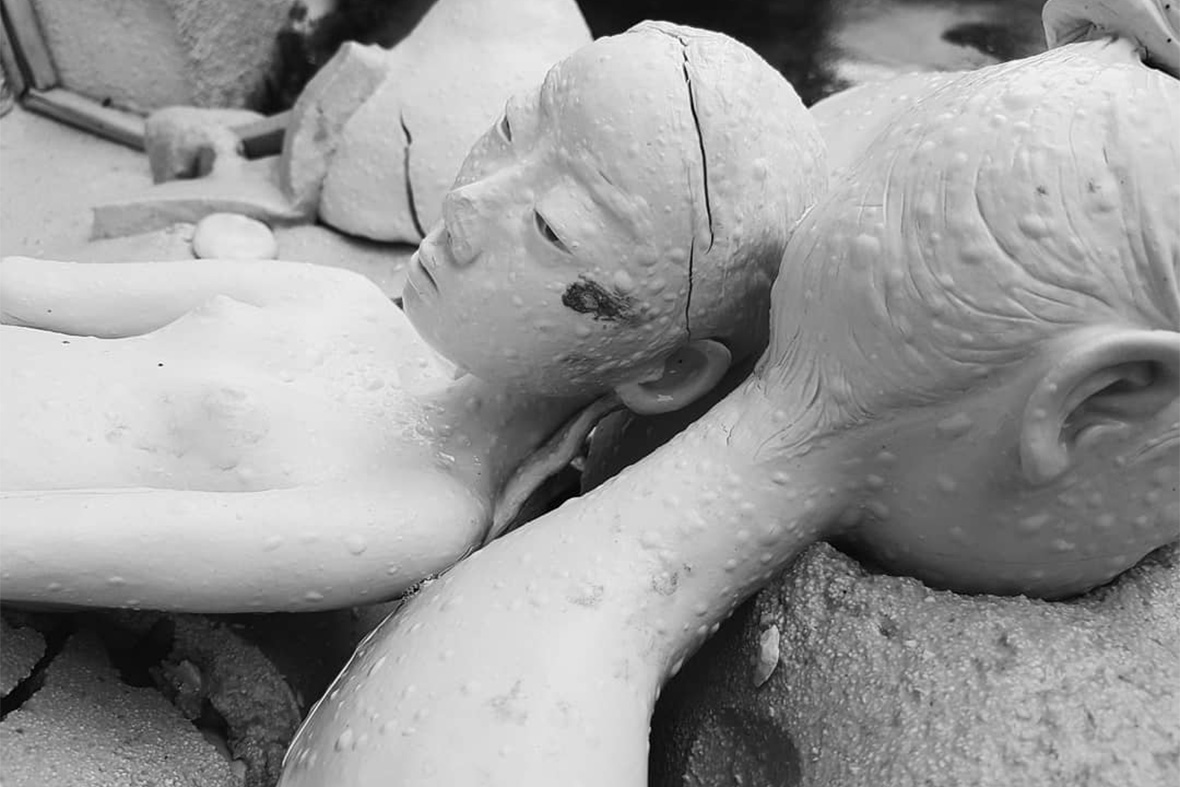
Not much joy can be found in the sculptures of Filipina artist Kara De Dios, whose ceramic forms seem haunted by emotions. Gentle in demeanor, these porcelain women—with their furrowed brows and downcast glances—are unmistakably lost in sorrow. They’re pockmarked with imperfection and colored in with simple earthen tones, exuding a rawness that’s designed to comment on the unrealistic beauty standards that women are often held to.
端详 Kara De Dios 的作品,有时候并不是一个愉快的过程。你会感受到陶土中女人的情绪,低眉垂眼虽是温柔,又难免显得有些自怨自艾。这些塑像与图画没有完美的曲线,也并没有妖娆鲜艳的颜色,你甚至可以用“原始”去形容它们——原始的土色,原始的手工感,以及隐约渗透出来的原始女性躯体崇拜。
Prior to sculpting, De Dios painted for over a decade. She sees her time behind the easel as being foundational to her development as an artist, but sculpting has won her over. “Sculpting is a craft that mixes art and science, and I learn something new every time,” she says.
But to her, being a good sculptor involves more than having the technical know-how. The emotions that the artist instills into the work are equally important.
在开始涉猎雕塑之前,Kara 画了十几年的画。她把绘画当作一种创作意义上的奠基,时不时会回归它的怀抱——但此刻的她显然更钟爱雕塑。“它是一项真正混合了艺术和科学的工艺,每一次都会教给你一些全新的东西。” Kara 说。
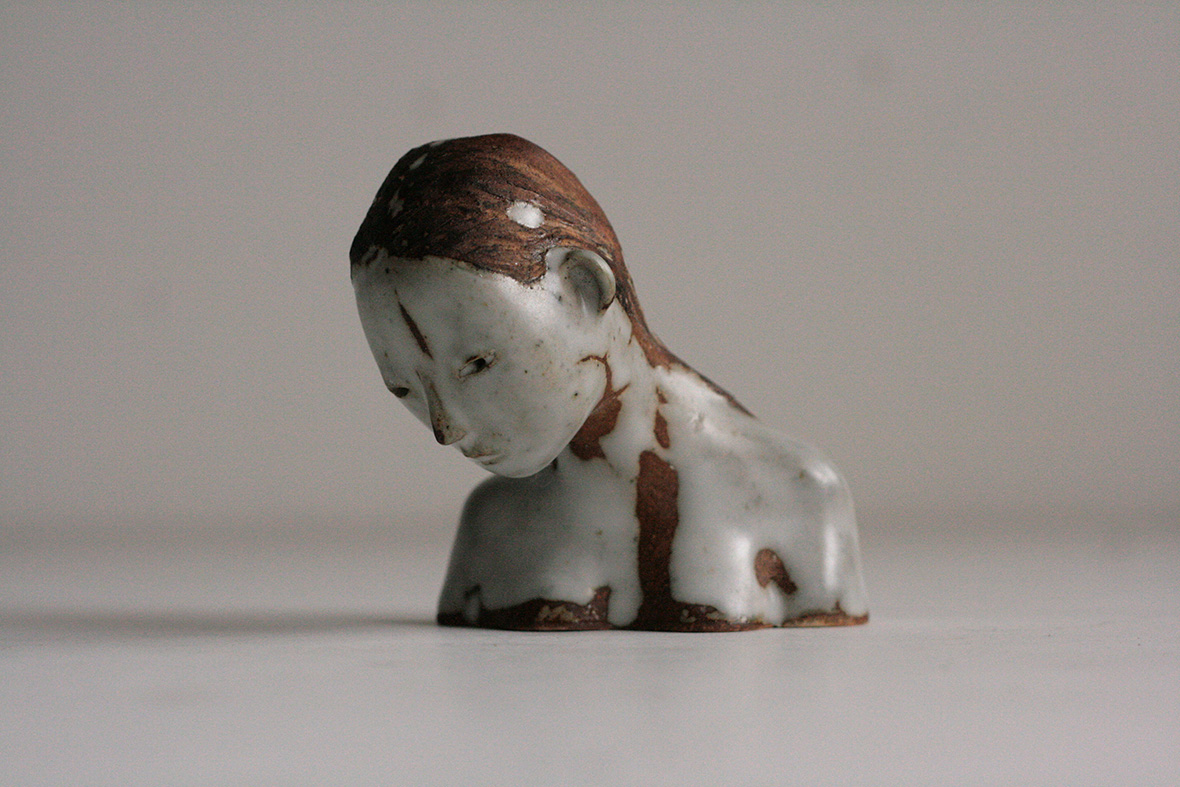
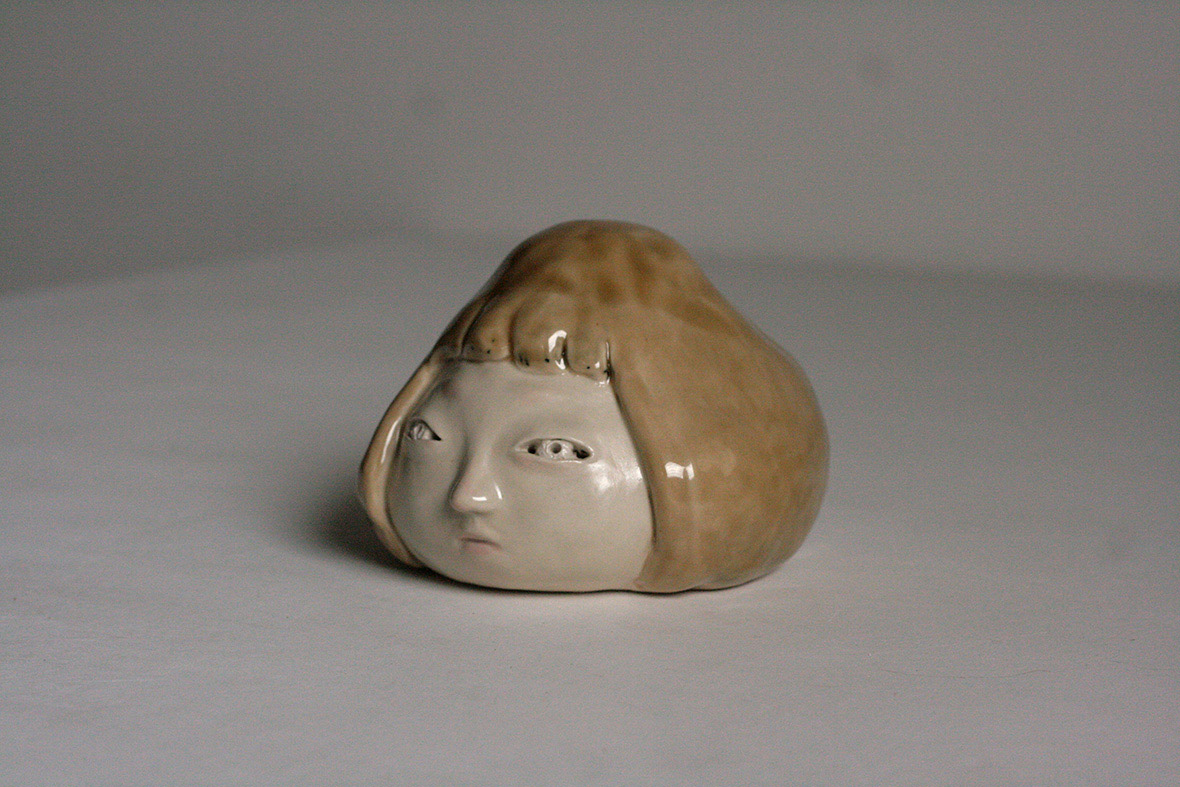
For each sculpture, De Dios begins by kneading and shaping a heavy lump of clay. After these initial steps are completed, it must then be dried for two days before it can be refined with further details. It’s a messy, painstaking process but it feels tremendously rewarding.
“Repairing cracks you didn’t expect, making your own tools, and feeling the thickness of the clay to determine whether it’ll survive the kiln or not are all enjoyable parts of the work,” she says. “When you finally open the kiln door and take out a finished sculpture, two months have already passed since you began.”
Sculpting has taught De Dios a number of important virtues, such as being patient, tenacious, and resourceful. The challenging nature of the medium has also sharpened her creative instincts.
每次创作时,个人的感知、情绪和技巧同时迸发,10 磅重的粘土需要经历摔打、揉捏、塑形,等雏形初具之后,还要再等两天左右让它干透,才能进行下一次精雕细琢。这个过程不免让浑身都沾满了泥污,但 Kara 很享受:“去修补那些意想不到的裂缝、亲手制造你需要的工具,甚至用手指触摸粘土的厚度,判断它是否会在窑里爆了或是裂了……当你战战兢兢终于打开窑门的时候、拿出一件成品雕塑的时候,可能距离最初的想法已经过去了两个月。”这个过程虽然痛苦漫长,却也充满着甜蜜的期盼,Kara 直言雕塑磨砺了她的天性,也赐予了她坚韧、机敏和耐心。
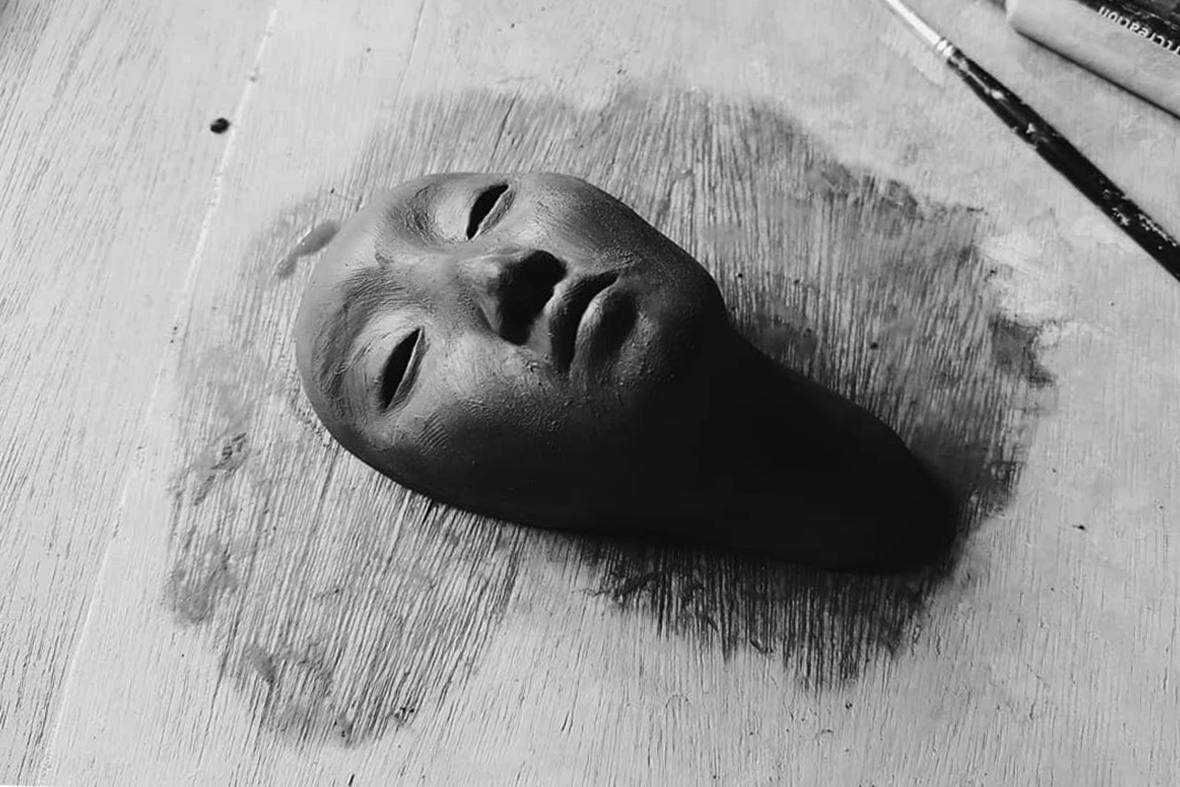
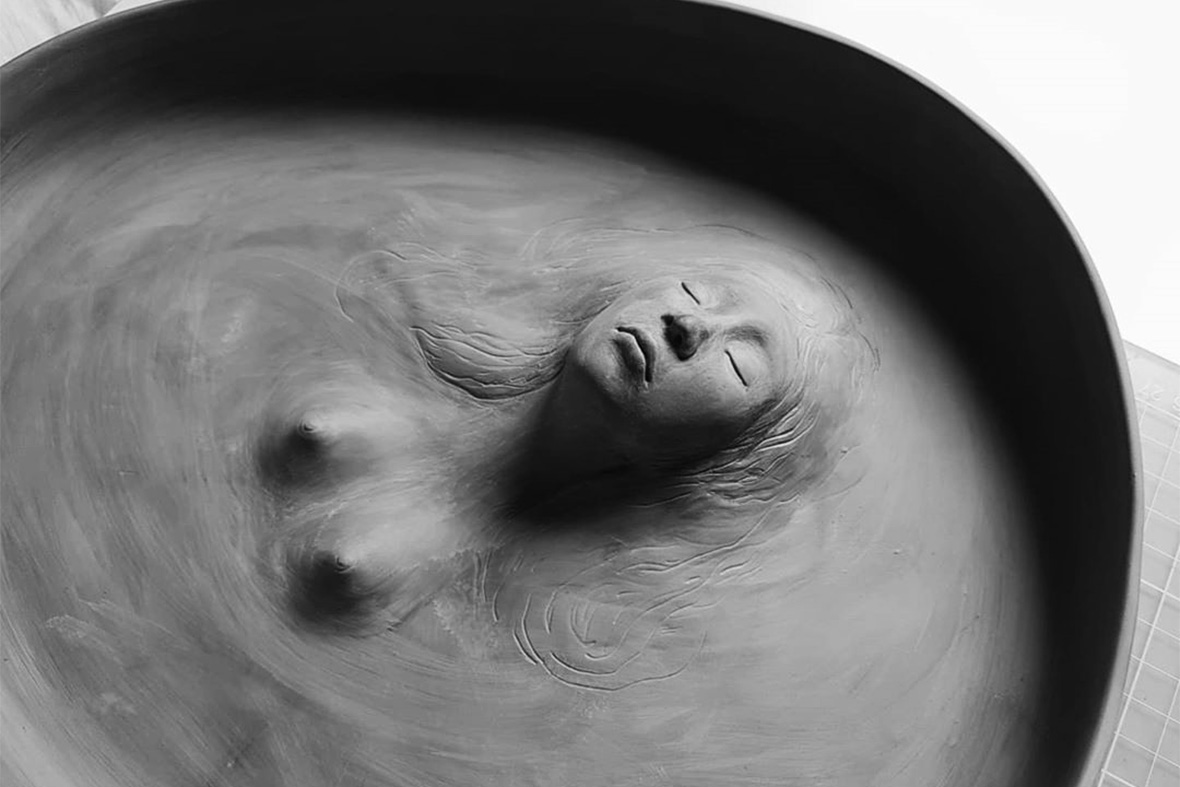
Throughout De Dios’s work, bosoms appear in the likeness of steep mountains, and it’s not by coincidence. By drawing parallels between the female anatomy and terrestrial formations, she presents a rather straightforward statement: her understanding of the world around her is rendered through her experiences as a woman.
在 Kara 的作品中,“山如胸如山”是一个反复出现的主题。这种抽象的隐喻把女性的乳房和地球的山峦联系起来,略带荒诞,却很写实:她在用女性的方式理解世界、表达自我。
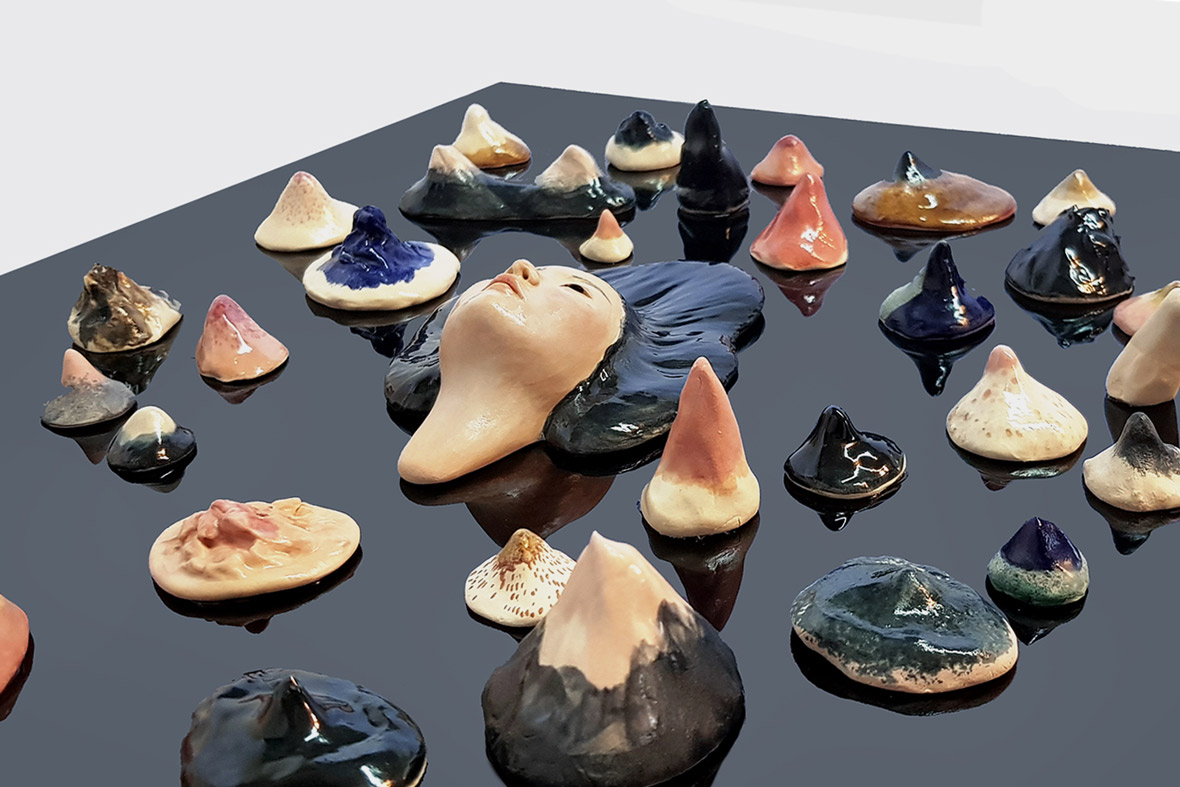
It was at a young age when De Dios first became interested in feminine beauty. She often sketched images of beautiful women she came across in magazines, but these magazines, being mainly Western publications, were filled with Caucasian supermodels. Only in high school did she realize how much her notion of beauty was skewed by these images. It became clear to her that beauty was so much more diverse and should never be defined by skin tone. Disillusioned, she began to look inwards for a better understanding of femininity and beauty. “These falsehoods were often propagated by Filipino society and media,” she says. “Special attention was always being given to white or fair-skinned people.”
Kara 说其实她很小的时候就从杂志上临摹女体,但她从未意识到这些临摹对象都是白人女性。作为菲律宾人的她,甚至从来没有这种意识,直到高中。她那时才忽然意识到,原来西方的审美标准早已深深烙印在人们的脑海里——你仿佛只有变白才能变美。“这也是电视和电影、甚至菲律宾家庭和社会所反映的信息:白人或浅肤色的人种享有特别的关注和青睐。”她说,意识到这一点之后,她才开始真正画下自己和所属。
Through her sculptures, De Dios show the multifaceted nature of women, demonstrating that beauty comes in a multitude of shapes and forms. These ceramic portraits capture the expressive range of a woman’s face—whether it be vulnerability, empathy, or indifference. These relatable emotions are often based on De Dios’s own emotions at the time of creation, and by adding a touch of her unique brand of humor and silliness, these sculptures are further imbued with her personal imprint.
“The women in my works are proxies of myself,” De Dios says. “I believe that the works of every artist are extensions of themselves or their interpretation of the world. In this way, my works aren’t actual self-portraits; they’re more a reflection of my emotional state. I want people who see my works to understand me, even without having ever met me.”
Kara 希望她作品不仅仅只呈现女性柔弱、忧郁而感性的一面,也能展现出她本人的幽默、愚钝,以及女性不同的气质面:或美丽,或丑陋,或泯然众生,或遗世独立——这都是她当时当刻情绪的写照,当然,也可以用在每一个观者身上。
“在我的作品中,女性身体所代表的就是我自己。而且我相信当一个艺术家创作的时候,这些都是在探索和尝试去理解她自己和她周围的世界。比起真正意义上的‘自画像’,它们更像是我情绪的肖像。我想让那些看到我作品的人甚至不用认识我就能了解我。”
